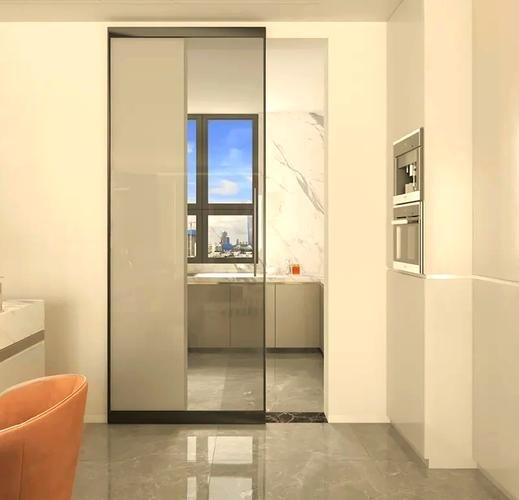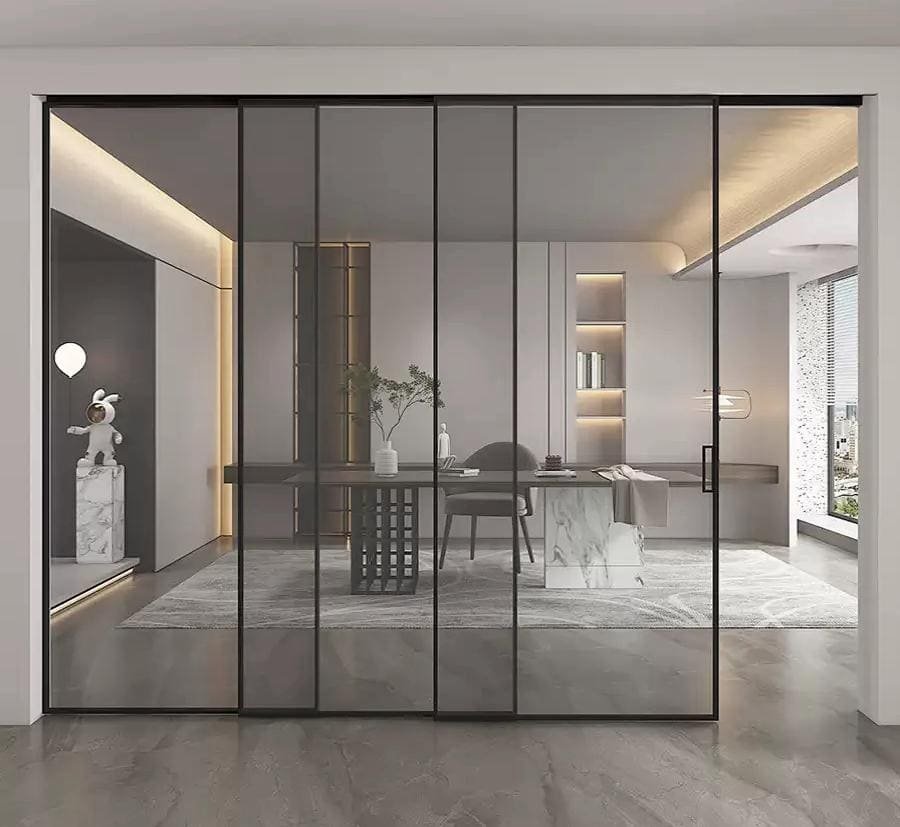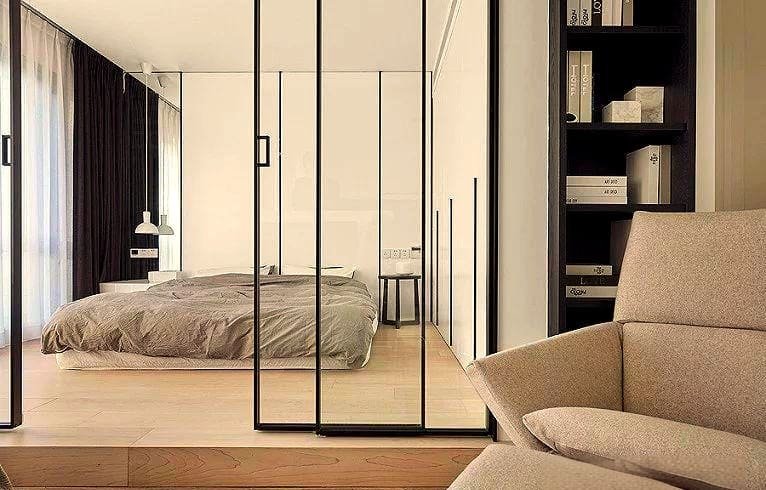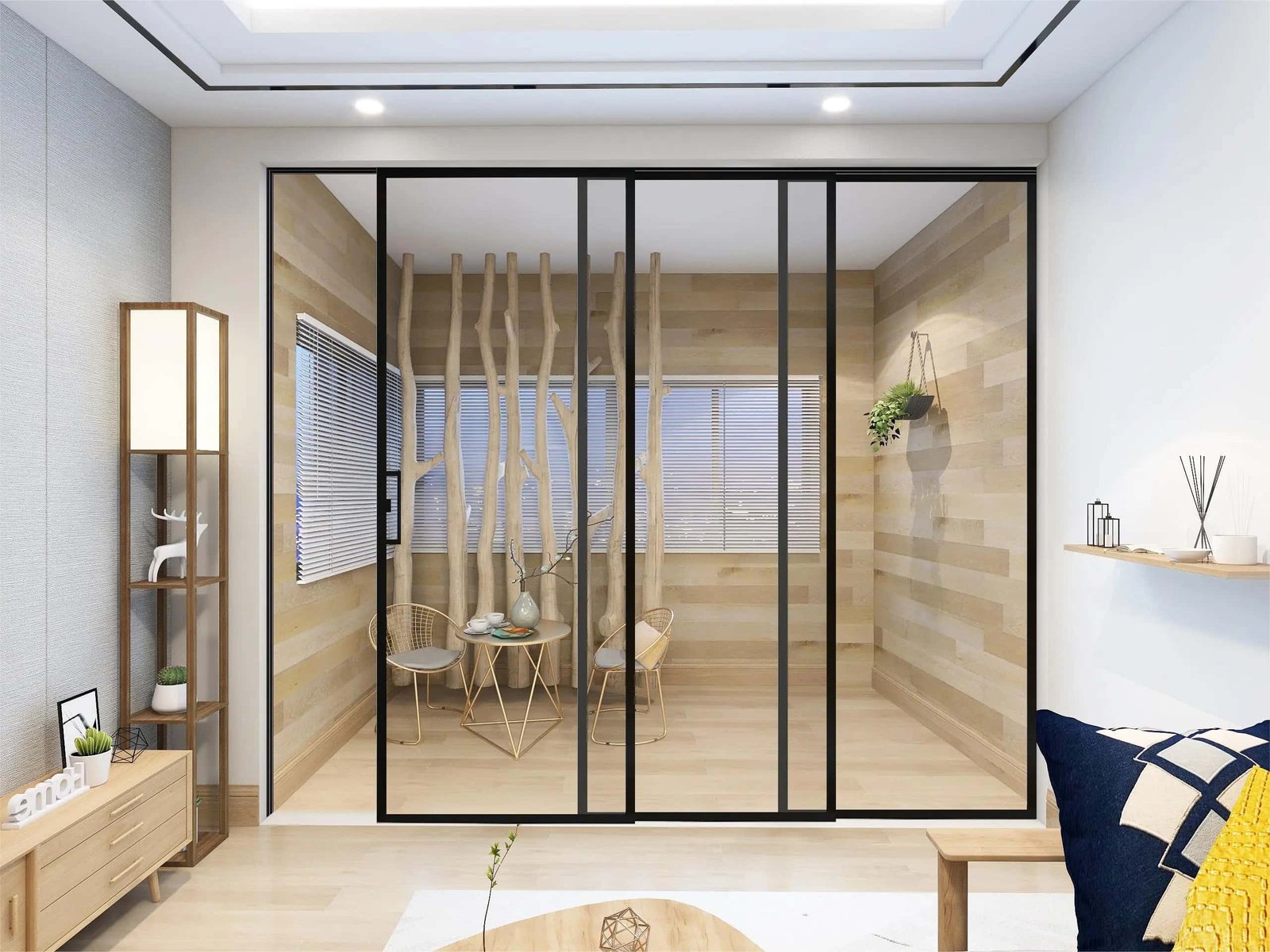Tired of bulky, visible tracks ruining your minimalist designs? These old systems collect dust and clash with modern aesthetics, making a space feel dated. It’s time for a cleaner solution.
A ghost door’s hardware is invisible because it uses a concealed track and roller system. This mechanism is hidden within the door, the wall, or the ceiling, eliminating any visible floor tracks and creating a sleek, floating appearance perfect for modern interiors.

The magic of a ghost door lies in its clever engineering. It transforms a functional element into a design statement. But as a professional, you know that looks are not enough; the hardware must be reliable, durable, and easy to install. In my years of manufacturing these systems, I’ve learned that the quality of the hidden components makes all the difference. Let’s break down exactly how this technology works, what to look for when sourcing it, and how it solves common problems.
How does a trackless sliding door work?
Want that seamless trackless look but worried about stability? The engineering can seem complex, and you might fear it’s unreliable. I’ll show you how simple and strong the mechanism is.
A trackless sliding door works by supporting all the door’s weight from a concealed upper track hidden in the wall or ceiling. Small, discreet guides or pins on the floor keep the door perfectly aligned, ensuring it slides smoothly without wobbling.

The term "trackless" can be a bit confusing because there is always a track. The key is that the track is completely hidden from view. The weight of the door panel is hung from rollers that glide inside a channel, which is either recessed into the ceiling or mounted on the wall and covered by a pelmet. At the bottom, a very small pin or a narrow channel is fixed to the floor, often right under the door’s path. The door has a small groove on its bottom edge that engages with this pin. This simple guide is all that’s needed to prevent the door from swinging back and forth. This top-hung design is what makes the "trackless" floor possible.
Here’s a breakdown of the core components:
| Component | Function | Key Sourcing Consideration |
|---|---|---|
| Concealed Top Track | Bears the full weight of the door. | Material strength (e.g., high-grade aluminum) and precision engineering. |
| High-Load Rollers | Allow the door to glide smoothly. | Bearing quality (e.g., Japanese bearings) for silence and durability. |
| Floor Guide/Pin | Prevents the door from swinging. | Simple, durable material that won’t easily break or wear down. |
| Soft-Close Dampers | Prevents slamming. | Fluid dynamics; ensures a gentle stop without bouncing back. |
How does a ghost track sliding door work?
The name "ghost door" sounds mysterious. You might think the installation is a nightmare for your team. But the clever hardware design actually simplifies the whole process and creates a stunning effect.
A ghost track sliding door uses hardware mounted directly to the back of the door panel. A small runner or guide is fixed to the wall, and the track itself is completely hidden behind the door, creating a floating illusion as it moves.

This system is a specific type of trackless design. Instead of hiding the track in the ceiling, the track is mounted on the wall, but it’s concealed by the door panel itself. The rollers are attached to the wall, and the track is routed into the back of the door. As the door slides open and closed, it moves along these wall-mounted rollers, completely hiding all the operating hardware from every angle. This is what creates the true "ghost" effect—the door seems to float along the wall with no visible means of support from the top, bottom, or sides. It requires precise routing of the door panel, so the quality of both the hardware and the door manufacturing is crucial.
The Core Mechanism
The success of this system depends on three things:
- A Strong Wall Anchor1: The rollers that hold the entire door are fixed to the wall. This connection must be secure.
- A Perfectly Straight Track: The track machined into the door must be perfectly straight and smooth to avoid any bumps or friction.
- Durable Rollers2: The rollers must be made from high-quality materials to handle the load and provide a silent, effortless glide for years.
How to repair a ghosting door?
A wobbly or sticking ghost door can ruin the magic for a client. Fixing a hidden system seems difficult, but troubleshooting is straightforward if you know what to check first.
To repair a ghosting door, first check the floor guide for debris, damage, or misalignment. Next, inspect the concealed rollers for wear. Often, the issue can be solved by adjusting roller height, tightening fasteners, or cleaning the hidden track.

Because ghost door systems are designed for simplicity, repairs and maintenance are not as complicated as they might seem. In my experience, most issues come down to a few common points of failure that are easy to address. The key is to work methodically. Before doing anything, check the door’s movement to identify the exact problem. Is it scraping? Is it wobbling? Is it making a noise? This will help you find the source of the issue quickly. High-quality hardware from a reliable manufacturer will have detailed instructions and is designed for easy adjustment, which is something we always focus on in our products.
Here is a simple troubleshooting guide:
| Problem | Possible Cause | Solution |
|---|---|---|
| Door scrapes the floor | Rollers have lowered over time. | Remove the door and adjust the height on the roller mechanism. |
| Door wobbles or swings | Floor guide is loose or misaligned. | Check the floor guide. Tighten its screws or reposition it. |
| Movement is noisy or jerky | Debris in the track or worn rollers. | Clean the concealed track. If noise persists, inspect and replace rollers. |
| Door feels heavy | Roller bearings are failing. | The bearings inside the rollers have worn out. Replace the roller units. |
What is the common problem with sliding doors?
Sliding doors look great, but common issues can lead to costly callbacks. You need to avoid problems like jamming and derailment. The secret is choosing the right hardware from the start.
The most common problems with sliding doors are roller wear, track misalignment, and debris accumulation in the track. These issues cause sticking, grinding noises, and doors that jump off their tracks. Using high-quality, durable hardware significantly reduces these headaches.

For decades, I’ve seen the same issues with traditional sliding doors. Systems that rely on floor tracks are especially problematic. The floor tracks become a magnet for dust, dirt, and pet hair, which jams the rollers and makes the door difficult to move. The rollers themselves, especially low-quality plastic ones, wear down, crack, or get flat spots, leading to a bumpy and noisy operation. This is why top-hung systems like ghost doors are a superior engineering solution. By moving the primary mechanism off the floor, you eliminate the most common point of failure. It’s a simple change, but it makes a huge difference in the long-term performance and reliability of the door, which ultimately means happier customers and fewer support calls for your business.
Traditional vs. Ghost Systems
| Feature | Traditional Sliding Door3 | Ghost Sliding Door System4 |
|---|---|---|
| Track Location | Exposed on the floor or a bulky top pelmet. | Completely concealed in the wall or behind the door. |
| Common Failure | Debris in floor track jams bottom rollers. | Minimal failure points; protected from debris. |
| Aesthetics | Track interrupts flooring and visual flow. | Uninterrupted flooring for a seamless, clean look. |
| Maintenance | Frequent track cleaning required. | Very low maintenance due to concealed parts. |
Conclusion
Ghost door hardware hides the track for a clean, modern look. Choosing high-quality, well-engineered components from the start is the key to ensuring reliable, long-lasting, and impressive performance.
Understanding the importance of a strong wall anchor can enhance your door system’s stability and longevity. ↩
Exploring the significance of durable rollers can help you choose the best materials for a smooth and long-lasting door operation. ↩
Learn about the common issues with Traditional Sliding Doors to make an informed choice for your space. ↩
Explore the advantages of Ghost Sliding Door Systems for a sleek, modern aesthetic and low maintenance. ↩

